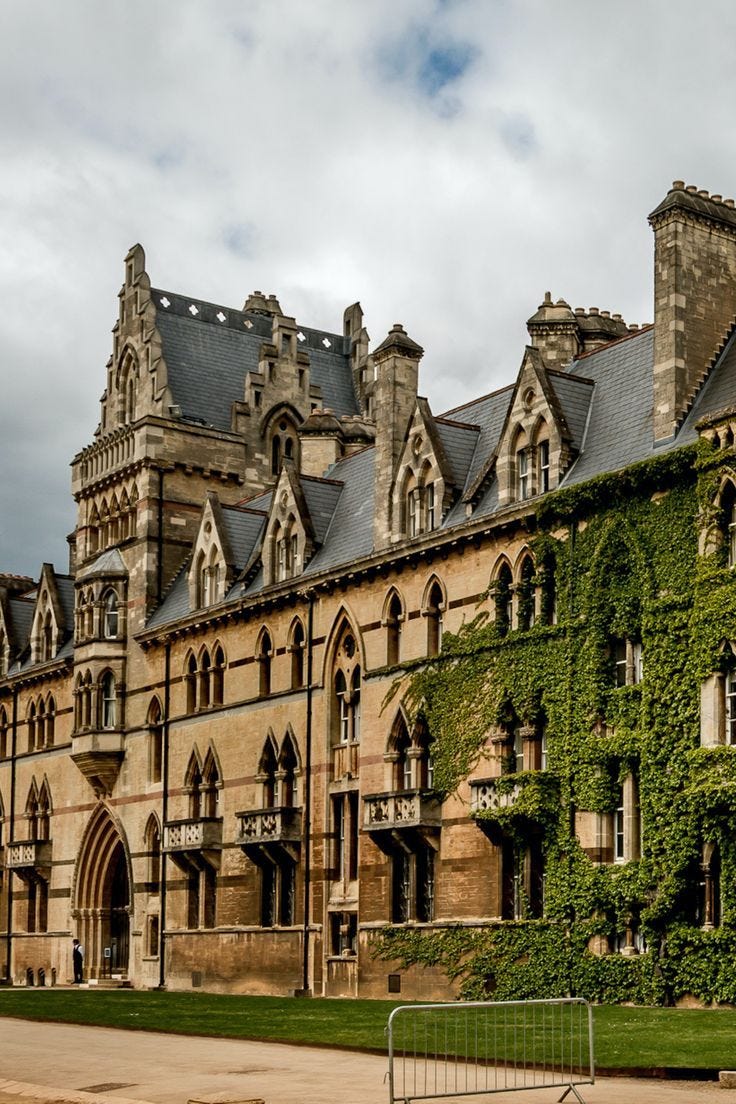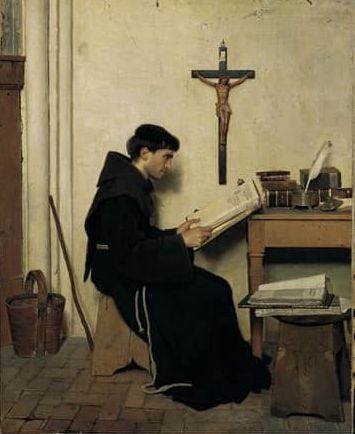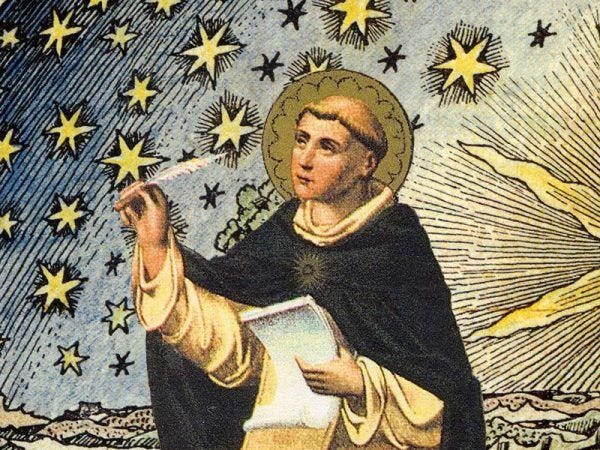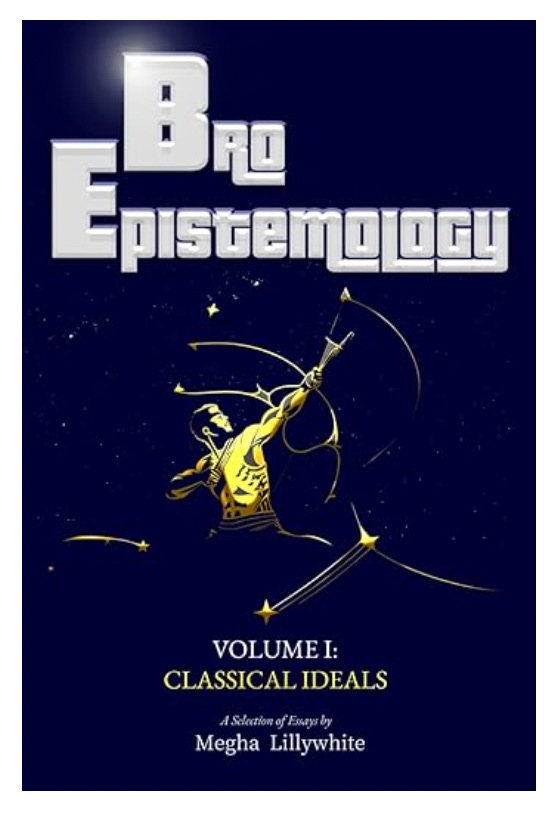We are taught to think the medieval European world was a backward time, that the Church was closed-minded and the people were illiterate. Centuries of anti-Christian, and now anti-European propaganda would have you believe that medieval Europeans were just mud-hut dwelling neanderthals who only knew barbarism and base violence.
This form of propaganda is not only despicable, but it disrespects the tireless and important work of the people who built the very institutions that we benefit from today. There is so much to say on this topic but today I will cover only a brief History of the University…the real history validated through facts, figures and a paper-trail of manuscripts from the time period that are difficult to dismiss.
Where did the idea of a University even come from?
The twelfth and thirteenth centuries saw an explosion in the formation of Universities across Europe. The first University was the University of Bologna, which focused primarily on the study of law. Following closely behind was the University of Paris and the University of Oxford.
It was not a formal creation or a deliberate invention, but rather a natural outgrowth of the time period. People wished to study, and the Catholic Church provided the location as well as peace for teachers, scholars and students to congregate. It provided the peaceful asylums in which scholarship and learning might be cultivated away from military responsibilities that might burden a man in the secular world. So of course it was in the natural development of the Catholic Church to become a place of education.
This is why even today our idea of the University involves a Gothic Cathedral, because all Gothic Cathedrals were Catholic churches, and all Cathedrals housed universities and centres for education. The school itself in the twelfth and thirteenth century was called the Studium Generale.
This is because when letters were formally addressed to the combined faculties of a Studium Generale, the letter began with the greeting “Universitas Vestra” meaning “greeting to all faculty universally and without exception”. Gradually, the word University came to be applied to the institution itself.
“Only the rich or the religious could get an education and most people were illiterate.”
This is another lie that is told about education in Medieval Europe. Part of the reason we believe that proper education was limited to the rich and powerful is because this is the way the world functioned in the 19th century and still does to a great degree today. Who was the medieval university student? He was not a noble aristocrat in training to become a priest. He was an ordinary lad. The average student attending University was a middle class boy of 12-15 years of age.
Why so young?
This is a question we would only ask today when the majority of a child’s education is glorified baby sitting and most people graduate barely literate with only a simplified Hollywood understanding of history, and no ability to write or articulate their own thoughts.
Modern education, like modern governments and many other modern systems, is bloated and inefficient. In the medieval world, a young man was expected to complete his education and begin the work of his life by age 18. Today, a young man usually only begins his true education at age 18. The youth have been robbed of their time and vitality by institutions that profit from their docility and incompetence.
What is the impact of delaying so many young men from their life’s work? How much more could be accomplished in our world if they were not delayed in this way?
We only need to look at the myriad accomplishments of the learned men of Medieval Europe, their discoveries, their literary and artistic achievements, their great architecture and their scholarship, to understand what we are missing. But I digress.
But perhaps only a few students went to University at this time? Perhaps it wasn’t a popular endeavour? The average medieval peasant couldn’t possible be so well educated could he?
Well, the historian Gascoigne writes that there were 30,000 students at the University of Oxford at the end of the thirteenth century. This historian lived within one hundred years of the events which he writes about. He also wrote in Latin so the figures cannot be mistaken. Professor Laurie in the book, The Rise and Early Constitution of the University with a survey of Medieval Education, reports the same number, and that there were 20,000 students at the University of Paris and 20,000 at the University of Bologna.
Numbers only make sense when they are compared. First, it must be noted that these numbers are almost the same as the number of students attending University today, when the population is much larger. Second, if we consider that the population of Europe was much smaller in the 13th century, the number of students at the Universities becomes even more impressive, because it indicates that it wasn’t just a small elite that were educated, but the average young man.
Furthermore, although all university students were called “clerics” they were not in fact monks and priests in training. Most students resumed an ordinary secular life when they graduated. It was only because they were living in cathedrals and churches that they had to observe the religious life while they were there. It may also have been more conducive to efficient study to “live like a monk” while they were in school.
“The Church was a closed-minded superstitious institution, antagonistic to scholarship”
It is perhaps more surprising that it was middle class and poor students who studied, than that they were so young. This was possible for two reasons: the first reason was that young men of nobility were more concerned with military conquest than with education. The second reason was that the Catholic Church had many systems in place to support the students who went to school.
That the Church was heavily involved in charity is obvious and rarely contested, except by the most ignorant and spiteful among us. The Church founded practically all the city hospitals in Europe, but it also founded as many schools. It was a papal requirement that each cathedral should have at least a grammar school associated with it. Metropolitan churches were required to maintain at least three professors, one to teach grammar, one to teach philosophy, and one to teach canon law. Almost all of these eventually became Universities by the end of the 13th century.
The Catholic Church was required to give financial support to anyone who wanted to study at a University but couldn’t afford it. In exchange the student did work for the Church. Support was not given in the form of “tuition fees” or predatory student loans, as it is given today, but rather in the form unglamorous room and board. Pope Innocent III mandated that one out of every twenty students had to be supported by the church.
These facts refute the lies that the Church did not care about education, and that only the wealthy, religious elite could get an education. The average Medieval peasant was highly educated and likely better educated than University students today.
“The Medieval University only studied mysticism and parochial religious ideas, not real scholarship”
Here is another lie that will be put to rest after you read this section.
One of the most important subjects taught in the medieval university was dialectics. This is the study of concepts through the definition of words, logic and the refinement of language. Many today see this as a waste of time, but the deterioration of language has made it impossible to discuss very important topics with most people because they literally do not have the linguistic comprehension to understand them. Clearly, the study of rhetoric and dialectics should always be a priority for serious students––if you cannot understand and use language properly, how can learn anything communicated by it?
Modern education considers the training of the human mind as of little value in comparison to the stocking it with information. This makes the mind vulnerable to manipulation, propaganda and superstition. Learning how to think and process information is an important prerequisite to gaining knowledge without perverting or misunderstanding it. The medieval peasant had this knowledge, which if I may be so bold to say, even most PhD graduates today lack.
This is perhaps why the medieval peasant was able to accomplish so much more than the modern man who is “still figuring out what he wants to do” at age 30, when medieval man would have already made great contributions to society. This is why modern man has been so easily manipulated by propaganda and has no sense of history or identity outside of what he consumes.
Not all languages are equal. Modern European languages owe their precision and analytical subtlety to medieval systems of rhetoric and dialectic that worked as whetting stones to refine and sharpen language and give them their potency. Although there are thousands of languages in the world, great literature, philosophy and scholarship are conducted in only a very few. It is taboo in today’s pathologically “egalitarian” culture to even make this basic observation. Even the languages of antiquity: Latin and Greek, owe their refinement to the medieval European scholars who studied and built upon them.
“The Church was anti-science and made no contribution to the modern sciences”
The modern world only understands one way to come to an answer to a question: experimentation. Of course, this is not the only way to answer questions. Logic and inductive reasoning are equally valuable methods of discovery and answering questions.
This is evident in the many discoveries made by medieval scientists. Even the phrase “medieval scientist” is laughed off today because of the severe propaganda against scholarship from this time period. But it just takes a simple glance at history to realize how deeply wrong this is, and how much we owe our modern scientific understanding of the world to these “parochial religious bookmen”.
Saint Thomas Aquinas gave a series of lectures at the University of Paris in the thirteenth century. In these lectures he concluded: Nihil omnino in nihilum redigetur. This means, “nothing at all will ever be reduced to nothingness”.
Anyone who has even briefly studies physics and chemistry will recognize this electric sentence immediately.
It is the principle of the conservation of mass and energy!
This is the very foundation of physics and chemistry––of balancing equations in chemical reactions. How could a medieval monk have figured this out without modern equipment and experimentation? I will leave the in-depth discussion of that venerable genius, St. Thomas Aquinas for another time, but it is enough to say here that medieval peasants were as concerned with the big questions of the material world, as modern scientists are, and had as much aptitude to come to similar conclusions, albeit by different methods.
Sir Roger Bacon was a scholar teaching at the University of Oxford in the thirteenth century. Like most medieval scholars, he worked in a variety of fields and did not limit himself to one discipline as we are apt to do today.
Notably, he taught the principle of the aberration of light. Still more marvellous, he taught that light does not travel instantaneously but that it has a definite rate of motion, though extremely rapid.
Three centuries later, the German astronomer Römer would demonstrate the motion of light and its rate by his observation of the moons of Jupiter at different phases of the Earth’s orbit. We associate the concepts of the speed of light with twentieth century scientists like Albert Einstein...but a proper study of history would reveal that medieval scientists were already working on these concepts.
Albertus Magnus was a scholar at the University of Paris and his record is perhaps one of the most incredible to read about. He wrote twenty folios of work, each 500,000 words in length, about the natural sciences, specifically, chemistry and botany.
His work included direct observations from both nature and experimentation that set the foundation for modern scientific advancement. He made observations such as the fact that the milky way is actually a collection of stars and how it moves, that the figures on the moon are not reflections of the seas and mountains of Earth but rather its own surface.
His tenth book is a comprehensive treatise about Botany wherein he describes the sleep of plants, dormancy, the diminution of sap through evaporation from the cuticle of leaves, basic functions of xylem and phloem, and the methods of germination. Modern botanists still pay great respect to Albertus Magnus for his pioneering work.
Although it is true that medieval scientists did not have all the answers to everything, it is also true that modern scientists don’t have all the answers either.
Furthermore, it is always easy to disrespect your predecessors but it takes a measure of humility to realize that you are standing on their shoulders. Modern scientists could not have made any of the progresses and discovers that they have made without the scholastic infrastructure set up by the medieval university and the scholars that decided these questions about the natural world are worth pursuing. After reading this, it is impossible for anyone to continue saying that the Church was “anti-science”.
The University Today
There are many problems with the modern university. Many are eschewing it altogether as it has become a centre of propaganda and indoctrination rather than a place of learning and scholarship.
What was once an illustrious institution born of a natural desire for a population to learn about God’s world, has become a degree mill: people go because they need to get a job, and a degree (in recent history at least) made that more likely.
Instead of adhering to the principles of truth and sincere discovery, it has come to focus on political correctness and establishment ideology.
Instead of focusing on helping the common man study and develop his intellect to better society, the University now focuses on profiteering and exploiting the young through student loans. It pays its bureaucracy handsomely while paying its professors comparatively little. Perhaps the University was better run by religious men who had taken vows of poverty?
However, things are changing as the University seems to have abdicated its original purpose. People are forming parallel institutions of their own.
Many conservative thinkers would like Universities to emphasise more subjects that “get people jobs” rather than luxury subjects like history, art, rhetoric or philosophy. But these people are also betraying the very spirit of the University as well. It was never for “getting a job” but rather for teaching people how to think about themselves and the world and to place themselves in the context of history.
The University is the cornerstone of Western Civilization, the civilization that brought the world human rights and functioning justice systems––and the civilization that everyone runs to for asylum from war and strife, for a chance at a meritocratic and safe society. It is not surprising that the Modern West decays in tandem with the Modern University. Perhaps by looking at a time in history when both were at their peak, we can find ways to mend them, or at least find an ideal to calibrate our efforts against.
This has been one of my monthly free articles that I write for my Classical Ideals Blog. Each week I deliver interesting and thought provoking pieces that will educate you a little about art, history, or literature and connect it to the issues that face our society and culture. There is a great deal to be learned from the Arts about our world and the works of the greats were not meant to collect dust in libraries and museums, dead, but rather to live in the world as they inform our perceptions. Through the eyes and minds of the greats, we may see and understand our own world better.
If you enjoy this article, consider upgrading to a paid membership to support my research and writing! If you would like a physical copy of a collection of my essays, the first edition called Bro Epistemology is available on Amazon!









A medieval peasant child could detect symbolic language in a fairy tale communicating eternal meta patterns in life that today most adults can't comprehend.
Rapunzel - The Double Symbology of Hair - Pageau
https://www.youtube.com/watch?v=bdLAuZGmUSI
When modern man hears "myth" he thinks untrue, when myth is more than true, it's giving you a glimpse into the future if you recognize the patterns.
From a Christian perspective, I'm reading "Through New Eyes" by James B Jordan, and "A House for My Name" by Leithart, these get into what Jonathan Pageau's "Symbolic World" does for the Biblical symbolic worldview most modern Christians in the West have forgotten since the "Enlightenment," and for that reason often miss out on the enchanted worldview where the ancients were looking to the stars and realizing they were seeing a microcosm pattern of heaven, man being the microcosmic fulcrum where God united the heavens (intellectual) and the earth (body).
C.S. Lewis, Chesterton, and Tolkien were all trying to bring back this higher medieval understanding:
Lewis and Tolkien: G.K. Chesterton, Myth, and the Imagination - Ryan Reeves
https://www.youtube.com/watch?v=McnaNqj_vA4
This on Dante's Paradiso brings to light the medieval enchanted cosmology:
Dante's Paradiso & The 9 Levels of Heaven Explained - Windigoon
https://www.youtube.com/watch?v=b__PdJegZTA
I don’t think modern education is at all concerned with teaching facts. The opposite is the case, knowledge is eschewed in favour of skills and strategies. Progressive constructivist teaching tries to train people how to think, but the ‘what’ comes before the ‘how’. You can’t think critically when you have no domain knowledge.